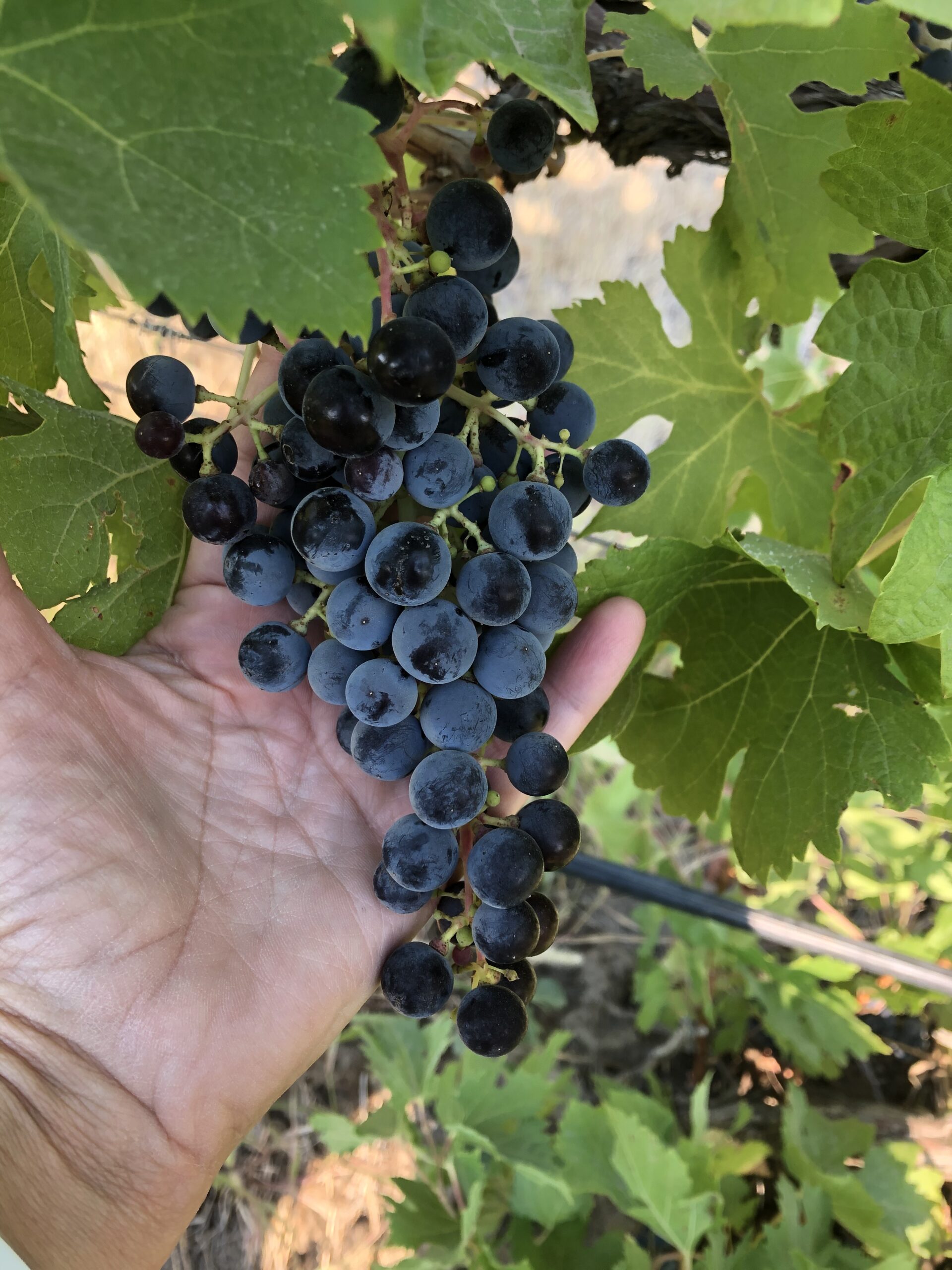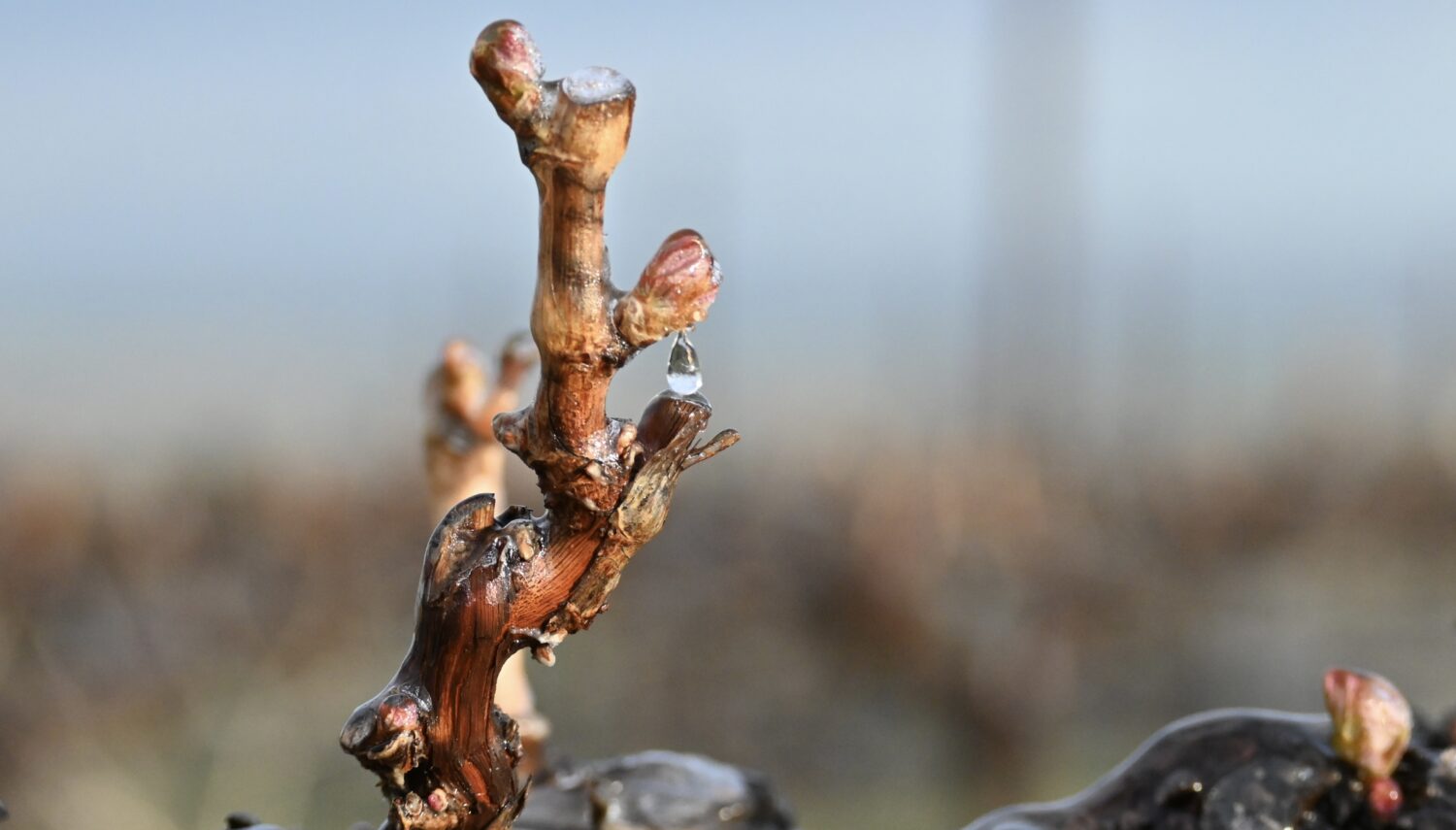Enjoy the fourth story from Sadie Drury, General Manager at North Slope Management in the Walla Walla Valley.
Pruning: Mid-January through April 1st when the chance of very cold weather has passed. If winter damage occurs the upper most buds are damaged first in a cold event, which is why we don’t prune during the coldest part of winter. We also start pruning at the highest elevations first and then move to lower elevations, saving the most sensitive varietals, such as merlot, until the very last in order to prevent winter and frost damage.
Bud Break: Early-to-mid April. This is the start of the growing season. We may have to run frost machines for the first 4-6 weeks of the growing season on cold nights to protect the new shoots. We begin to spray just prior to bud break and will continue to spray for mildew preventively every 2-3 weeks until early July. We will mix micronutrient fertilizers in these sprays for the vines to take up through the leaves. We often start irrigating around bud break. We will also apply some liquid macronutrient fertilizers around this time so the vines will have everything it needs to start the year off right.
Suckering and shoot thinning: Bud-Break to bloom. During this time we will remove shoots on the vine we won’t need for the year. When we remove shoots from the trunk of the vine it’s called suckering. We focus on keeping shoots with good positioning for future years.
Wire Adjusting: We move wires as the canopy grows throughout the season. Wire moving timing is critical in order to prevent the shoots from being tipped during a strong wind while the shoots are still growing.

Bloom: Early June. There is usually 100 days from bloom to harvest in Merlot and some white varieties. Cabernet Sauvignon is 120 days from bloom to harvest. During bloom, we try not to do canopy work or move wires in order to encourage good fruit set. Too much heat, too much rain, or too much wind are all things that can cause poor fruit set.
Fruit Set: 5-10 days post-bloom. This is the time when we first see the berries.
Deficit irrigation: Just after fruit set until the clusters begin to change colors we use less water in order to encourage the vines to stop growing taller and keep berry size small. This is called deficit irrigation. If the vines keep growing and berry size is large, it can cause poor fruit quality. However, it is critical during this time not to over stress the vines, which can lead to harsh tannin development and cause leaves to fall off and over expose the clusters to sunlight.
Leaf and Lateral Removal: Just after fruit set we start removing leaves on the morning side of the vine to allow sunlight into the canopy and onto the clusters. We also remove secondary shoots called laterals. How many leaves we remove depends on the varietal and row orientation. By opening up the canopy right after bloom we expose the clusters to sunlight making them less susceptible to sun burn and reducing flavors that may taste vegetal. We leaf-pull in the cultivars that can have more veggie flavors first, such as Cabernet Sauvignon and Cabernet Franc. Some cultivars can be pulled later, like Syrah, or not at all, like Sangiovese because they don’t develop as many veggies flavors and are susceptible to sunburn and harsh tannins when exposed to excess sunlight.
Lag phase: 30 days post bloom. This is the time when the seed hardens and develops inside the berry. We will begin crop estimates at this time, both weighing the clusters because we anticipate them to double in size, and counting berries to use historical berry weight to anticipate what the harvest cluster weight will be.
Veraison: 60 days post-bloom. This is when the berries begin to change color. By veraison we are complete with leaf removal.
Fruit thinning: shortly after veraison begins we thin fruit to improve quality. We will remove clusters that are lagging behind in color development and adjust the total amount of clusters on the vine so the plant doesn’t have to attempt to ripen more clusters than the canopy should support. By doing this we get even ripening and a better balanced crop to make the best wine possible. We apply bird netting to prevent bird and deer damage as soon as we are done dropping fruit.

Harvest: Early September – Late October.
Post-Harvest Activities: When harvest ends, we have a handful of jobs to be the vineyard “to bed.” We remove the bird netting, apply compost, hill around the base of the vines, and burry canes at lower elevations where we may see winter damage. We will give the vineyard one last irrigation set in order to fill the profile and prevent winter root damage since wet soil insulates the vines better. We usually finish these activities around Thanksgiving.
Our translation team is working on this. Please check back!


Join the Conversation